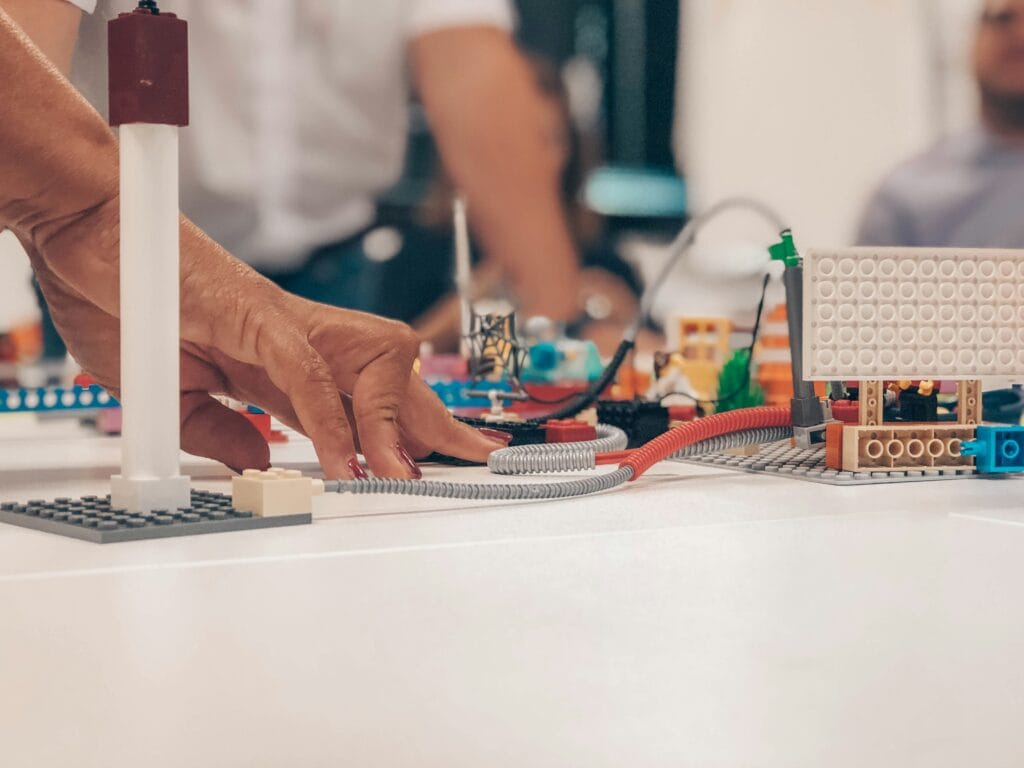Welcome to Week 42 of eCommerce news, where the industry continues to evolve at breakneck speed and missed opportunities hide in plain sight. Based on the latest podcast episode from The Checkout Point, this week brings a fascinating collection of developments that every eCommerce professional needs to understand—from the hidden potential lurking on your order confirmation pages to AI-powered shopping assistants that are fundamentally changing how consumers discover and purchase products.
Here’s the reality: while you’ve been focused on optimizing your product pages and checkout flow, there’s one page that literally every single customer sees that most stores treat like an afterthought. Your order confirmation page isn’t just a digital receipt—it’s prime real estate that’s currently sitting vacant. This week, we’re exploring why this overlooked touchpoint might be your biggest conversion opportunity, especially as we head into the critical holiday shopping season.
But that’s just the beginning. This week’s eCommerce landscape is shifting in remarkable ways. Google’s AI has evolved beyond simple keyword matching to actually understanding user intent, Walmart is pioneering conversational commerce through ChatGPT integration, and millions of IoT sensors are transforming physical retail into intelligent, responsive environments. Meanwhile, major players are carving out specialized marketplace niches, Shopify’s showing signs of a genuine comeback, and the battle lines for Black Friday 2024 are being drawn with new weapons like Buy Now Pay Later taking center stage.
Whether you’re running a small online shop or managing enterprise eCommerce operations, the next twenty minutes of insights will equip you with actionable intelligence about where the industry is heading—and more importantly, what you should be doing about it right now.
Order Confirmation Pages as Untapped Sales Opportunities
The 100% Open Rate Nobody’s Talking About
Here’s something that came up in this week’s eCommerce news, week 42, based podcast that got me thinking. Every single person who buys from your store sees your order confirmation page. Think about that for a second. You’re spending thousands on ads to get a 2% click-through rate, testing subject lines to boost email opens from 18% to 22%, but there’s this one page that literally every customer lands on. And most of us? We set it up once with a “Thanks for your order!” and never touch it again.

The data on this is kind of wild. Research from Litmus shows that order confirmation emails generate about $0.75 per email, compared to just $0.13 for regular promotional emails. That’s nearly 6x the return. People spend an average of 14.8 seconds reading these emails, which is 185% longer than they spend on basically anything else you send them.
Why We’re Leaving Money on the Table
You know what the problem is? These confirmation pages usually get built by developers, not marketers. They’re treated like a technical requirement instead of a sales opportunity. But your customers are in this perfect state right after buying. They’re excited, they trust you enough to hand over their credit card, and they’re actively engaged with your brand.
This is where cross-selling makes so much sense. Not in an aggressive way, but thoughtfully. If someone just bought running shoes, maybe they’d appreciate a discount code for moisture-wicking socks. The key is keeping it relevant and not overwhelming the actual order details.
It typically costs between six and seven times more to acquire a new customer than to retain existing customers, and repeat customers purchase as much as 67% more than new customers.
Here’s what actually works on these pages:
- Clear order details first. Don’t bury the receipt information under a bunch of marketing stuff. People want to verify what they bought.
- A single, relevant product recommendation. Keep it to one complementary item, not a whole catalog.
- A discount code for next time. This performs better than almost any other tactic. Give them 15% off their next order.
- Social proof elements. A quick “Join 50,000+ happy customers” with a newsletter signup can work wonders.
The 80/20 rule applies here. Keep 80% of the page focused on transactional stuff (order details, shipping info, customer service links) and use maybe 20% for these gentle upselling opportunities. You’re not trying to turn the confirmation page into a second homepage.
Making It Feel Human
One thing I loved from the eCommerce news, week 42, based podcast discussion was this idea of personalization on confirmation pages. Not just “Hi [First Name]” personalization, but actually thoughtful stuff. If someone’s a first-time buyer, acknowledge that differently than you would for a returning customer. Maybe first-timers get a “Welcome to the family” message and an explainer about what to expect next. Repeat customers might see their purchase history or loyalty points.
The friction points here are usually pretty simple to fix. Make sure the page loads fast (people get nervous if they don’t see confirmation immediately). Keep the design clean and on-brand. Use a real email address for customer service questions, not a no-reply address. These small touches build trust at a moment when customers are already feeling good about their decision.
What’s interesting is how this ties into voice of the customer research. When you actually ask people about their post-purchase experience, confirmation pages come up way more often than you’d think. They want reassurance, they want clarity, and yeah, they’re open to hearing about related products if you do it right. As we explored in our look at order confirmation sales strategies, this post-purchase moment represents one of the most underutilized opportunities in eCommerce. In fact, your order confirmation might be your secret sales weapon if you approach it with the right mindset and tactics.
Google Transforms Product Discovery and Search Experience
Google’s AI Is Rewriting Search Results (Literally)
So you know how when you search for something, you usually get those classic blue links? That’s been the internet forever, right? Well, Google’s AI is completely reshaping those organic results, and it’s happening right now in ways that should matter to every eCommerce store owner.
Here’s what’s actually changing. Google’s new AI overviews aren’t just sitting at the top of search results anymore. They’re starting to pull product information, reviews, and buying guides directly into the search experience. You search for “best running shoes for flat feet” and instead of scrolling through ten blog posts, you get an AI-generated summary with product recommendations, comparison tables, and direct purchase links.
Now, you might be thinking, “Great, so Google’s just cutting out the middleman and I lose traffic?” Not exactly. The eCommerce news from week 42 based podcast highlighted something interesting. Stores that optimize their product data, reviews, and content structure are actually showing up within these AI overviews. It’s like getting featured in a snippet, but on steroids.
What This Means for Product Discovery
The whole game of product discovery is shifting. People used to search, click a result, browse your site, maybe compare a few stores. Now? They’re getting answers faster, which sounds bad until you realize something crucial. The purchase intent is higher.
When someone lands on your product page from an AI overview, they’ve already seen comparisons, read synthesized reviews, and decided your product matches what they need. You’re not competing for attention with ten other tabs anymore. You’re getting qualified traffic that’s further down the funnel.
The shift isn’t about getting more clicks. It’s about getting better clicks from people who are actually ready to buy.
But here’s the catch. If your product information is messy, if your schema markup is outdated, if your reviews are buried in some widget that Google can’t crawl properly, you’re invisible in this new search experience. And I mean completely invisible, not just ranked lower.
Some stores are already adapting. They’re restructuring product descriptions to answer specific questions. They’re making sure technical specs are clearly marked up. They’re encouraging detailed reviews that mention specific use cases. Because Google’s AI doesn’t just want to know what you sell. It wants to understand who should buy it and why.
This ties back to everything we’ve been seeing in the eCommerce news for week 42. Whether it’s optimizing order confirmation pages or adapting to AI-powered search, the pattern is the same. The stores winning right now aren’t the ones with the biggest ad budgets. They’re the ones paying attention to how customer behavior is actually changing and adjusting before everyone else catches on.
ChatGPT Enables Conversational Shopping Without Traditional Search
Shopping Through Chat Instead of Search
So we just covered how Google’s AI is reshaping search results, but here’s where things get really interesting. What if you didn’t need to search at all? What if you could just chat your way through the entire shopping experience?
I know what you’re thinking. “Wait, we’ve had voice shopping for years.” Sure, but this is different. Walmart just partnered with OpenAI to bring ChatGPT directly into the shopping flow. You could be asking for dinner ideas, and suddenly you’re buying ingredients. No searching, no clicking through product pages. Just conversation.

This week’s eCommerce news, week 42, based podcast dug into why this matters so much. The conversational commerce market is hitting $11.26 billion in 2025, and it’s not slowing down. By 2030, we’re looking at over $20 billion. That’s not hype. That’s real money moving through chat interfaces.
Why Chat Commerce Actually Works
Here’s what makes this different from those clunky chatbots we all learned to ignore. Modern AI can actually understand context. You can say “I need something for my kid’s birthday party next weekend,” and it gets that you’re probably looking for decorations, maybe a cake, possibly some games. It’s not just matching keywords anymore.
The numbers back this up. Companies using AI chat assistants are seeing conversion rates jump up to 35%. Even better? About 12% of shoppers who engage with chat actually buy something, compared to just 3% who don’t chat at all.
Think about your own shopping behavior for a second. How many times have you abandoned a cart because you had a simple question about shipping or sizing? With conversational commerce, that question gets answered instantly. Right there in the flow. No waiting for email responses or hunting through FAQ pages.
The Real Game Changer
What’s really wild is how this changes the discovery process. Traditional search assumes you know what you want. You type “red running shoes size 10” and hope the algorithm figures it out. But chat lets you explore more naturally. “I’m training for a half marathon and my knees have been bothering me” opens up a whole different conversation.
WhatsApp is crushing it here. About 66% of consumers who chat with a brand on WhatsApp end up making a purchase. That’s not a typo. Two out of three people who start a conversation actually buy something.
The speed factor matters too. Research shows that 73% of shoppers get turned off by slow responses. When you’re ready to buy, you’re ready now. Not in 24 hours when someone gets back to your email. This is why AI-powered chat works so well. It’s instant, it’s contextual, and it doesn’t make you wait.
For store owners, this means rethinking your entire customer journey. It’s not just about having a chatbot widget anymore. It’s about building real conversational flows that guide people from “just looking” to “take my money” without feeling pushy or robotic.
Walmart Deploys Millions of AI Agents Behind the Scenes
IoT Sensors Everywhere (And We Mean Everywhere)
So yeah, millions of sensors. And when I say millions, I’m talking about one of the biggest Internet of Things deployments retail has ever seen. Walmart’s pushing AI agents across 50 use cases already in production, but the real magic happens because of all these tiny sensors feeding them data.
Think about it like this. Every shelf, every freezer case, every pallet in the back room is basically talking to Walmart’s AI now. Temperature sensors make sure your ice cream stays frozen during that weird October heat wave we’re having. Inventory sensors track when the last bag of Halloween candy gets grabbed. Movement sensors understand traffic patterns through the aisles.
But here’s where it gets interesting. This isn’t just about knowing when to restock chips. These sensors create a constant stream of real-time data that feeds into those AI agents we mentioned earlier. Remember Sparky, the customer-facing agent? It can tell you if an item is in stock at your local store right now because sensors are literally watching the shelves.
From Sensor Data to Smart Decisions
You might wonder what Walmart actually does with all this sensor data. Fair question, because collecting data is easy. Using it well? That’s the tricky part.
The sensors connect to Walmart’s custom AI agents through something called the Model Context Protocol. Basically, it’s like giving all these different AI tools a common language so they can share information without getting confused. One agent handles customer questions. Another manages supplier relationships. A third helps store associates find products faster. And they’re all pulling from the same sensor network.
When you’ve got millions of sensors generating billions of data points, the AI agents become your translators, turning raw numbers into actions people can actually use.
Here’s a real example. Say the sensors detect that frozen food cases in 50 stores are running warmer than usual. The AI doesn’t just log it. It alerts maintenance teams, adjusts ordering to account for potential spoilage, and can even notify customers if their online grocery order might be affected. All of that happens automatically, in minutes.
Why This Matters for the Rest of Us
Now, you’re probably not rolling out millions of sensors across thousands of stores. But the principle here matters for any eCommerce operation. Walmart learned the hard way that deploying lots of separate AI tools creates chaos. They had bots for search, bots for scheduling, bots for suppliers, and it turned into a fragmented mess.
The fix was consolidating everything into four main “super agents” that work together. Customer-facing. Employee-facing. Supplier-facing. Developer-facing. Each one can access the sensor data it needs without customers having to figure out which bot to talk to.
This week’s eCommerce news, week 42, based podcast touched on this exact challenge. Most stores start adding AI features one at a time. Chatbot here, recommendation engine there, maybe some inventory automation. Before you know it, nothing talks to each other and your team is managing six different dashboards.
Walmart’s approach shows there’s a better way. Connect your data sources first. Then build AI tools that can actually share information. The sensors are just step one. The real power comes from orchestrating everything so it works as a system, not a collection of random tools that barely know each other exist.
Walmart Enters the Collectibles Market with New Strategy
Walmart Goes All In on Pokémon Cards and Trading Card Authenticity
So we just talked about Walmart going full tech mode with those IoT sensors, right? Well, here’s where things get interesting. They’re now trying to become the go-to place for buying collectibles. Wait, collectibles? Like Pokémon cards and stuff? At Walmart?
I know what you’re thinking. But hear me out on this one.
Think about how sketchy it can be buying collectibles online sometimes. Is this card actually authentic or did someone just print it in their basement? My cousin bought what he thought was a rare trading card, and it turned out to be about as valuable as a gas station receipt. That’s the problem Walmart’s trying to solve with their new marketplace category.

They’ve opened up their marketplace to third-party sellers for collectibles. Trading cards, sports memorabilia, comic books, Funko Pops, the whole nine yards. But here’s the smart part: sellers have to apply and get approved first. They can’t just waltz in and start listing their “totally authentic” vintage action figures.
The Trust Factor Nobody’s Talking About
This move actually makes a ton of sense when you think about it. Walmart already has massive brand recognition. People trust them for everyday stuff. Now they’re saying, “Hey, you can trust us for your collectibles too.” They even brought in Bob Means, who used to run trading cards at eBay. The guy knows his stuff.
And get this: they’re not just throwing up a marketplace and calling it a day. They launched a weekly live shopping series called “Collector’s Night” with TalkShopLive and WeTheHobby. It’s like QVC meets your local card shop, complete with live box breaks and exclusive releases.
The eCommerce news from week 42 based podcast covered this, and honestly? It’s a pretty clever play. They’re competing directly with eBay and TCGPlayer now, but with the advantage of being, well, Walmart. You can buy your groceries and your graded Charizard in the same checkout.
What This Means for eCommerce Sellers
If you’re selling collectibles anywhere online, this should make you pay attention. Walmart’s offering 0% referral fees through September to get sellers on board. That’s a pretty aggressive move to grab market share.
The big question mark? Authentication. Right now, it’s “currently unclear” how they’re handling fake items and fraud protection. They’re promising graded options are “coming soon” for trading cards and comic books, but that’s the piece that could make or break this whole thing.
Because at the end of the day, collectors care about one thing above all else: knowing what they’re buying is real. Walmart’s betting their brand reputation can bridge that gap while they build out the verification systems. Time will tell if that’s enough, but they’re definitely not playing around with this category expansion. They see where the money’s going, and spoiler alert: it’s into Pokémon card sleeves and vintage comic book bags.
Shopify’s E-Commerce Comeback Story
Remember when everyone was talking about the eCommerce boom during the pandemic? Shopify was everywhere. Then 2022 hit, things got… complicated, and suddenly people were wondering if the whole online shopping explosion was just a temporary thing. Well, turns out Shopify’s having quite the moment right now.
Analysts are getting bullish again. Like, really bullish. Shopify just posted Q4 2024 numbers that show revenue up 31% year over year to $2.81 billion. That’s not just growth, that’s acceleration. Their gross merchandise volume hit $94.46 billion in Q4 alone, up 26% from the year before.
Here’s what caught my attention in this week’s eCommerce news, week 42, based podcast discussion: Shopify crossed $1 trillion in cumulative GMV in 2024. Yeah, trillion with a T. They’re also sitting at over 12% of the U.S. eCommerce market share now. That’s not a niche platform anymore. That’s serious infrastructure.
What Changed? Everything and Nothing
So what’s driving this comeback? It’s not just one thing. Shopify spent the last couple years getting serious about their enterprise game. Shopify Plus now powers over 50,000 active stores, and it’s contributing 31% of their monthly recurring revenue. They’re not just for scrappy startups anymore.
The international expansion is wild too. Nearly 46% of their merchants are now outside North America. They added 30% more international merchants in the first half of 2024 compared to 2023. That’s the kind of growth that makes you sit up and pay attention.
When you look at the full year 2024, Shopify’s revenue hit $8.88 billion, triple what it was in 2020. Their operating income? Over $1 billion. That’s four times higher than their previous peak.
But here’s the thing that really matters for anyone running an eCommerce store: Shopify’s growth means the platform is investing heavily in features, infrastructure, and ecosystem support. Shop Pay processed $27 billion in GMV in Q4, up 50% year over year. That’s real momentum in checkout optimization, which directly affects conversion rates for merchants.
The Merchant Success Story Behind the Numbers
You know what I find interesting? For every $1 Shopify earns, their merchants generate over $40 in sales. That alignment is actually pretty rare in platform economics. It means when merchants succeed, Shopify succeeds. No weird incentive mismatches.
Their Black Friday/Cyber Monday numbers from 2023 were nuts. Merchants on the platform did $11.5 billion in GMV over those four days, up 24% from the year before. At peak, they were processing $4.2 million in sales per minute. The infrastructure held up perfectly.
Looking ahead, analysts are projecting Shopify could hit $12 billion in annual revenue by 2026 if they maintain their current growth rate. That’s a compound annual growth rate of about 29%. For context, they’re guiding for “mid-twenties” percentage growth into 2025, so they’re being conservative but confident.
The real question isn’t whether Shopify’s comeback is real. The numbers prove that. The question is what it means for the broader eCommerce landscape when the platform powering millions of stores is firing on all cylinders again. Because when Shopify invests in AI tools, checkout optimization, and international expansion, every merchant on the platform gets access to that innovation. That’s the kind of rising tide that actually lifts boats.
Black Friday Preparation Becomes Critical for Online Retailers
The Clock’s Already Ticking
So we just talked about Shopify’s massive comeback, right? But all those online stores better have their game faces on because Black Friday is basically breathing down our necks. I know, I know. It’s not even Halloween yet and you’re already stressing about Black Friday. But here’s the thing: if you’re not locked in by now, you’re already behind.
I was just reading WooCommerce’s 2025 Black Friday survey results, and the numbers are wild. Stores making over a million in annual revenue? They start planning three months out. That’s like, July. Meanwhile, smaller stores are still winging it with one to four weeks of prep time. Guess which group sees better results?

What’s Actually Changed This Year
Here’s where things get interesting in this week’s eCommerce news, week 42, based podcast discussion. The focus has completely shifted. Last year, everyone was obsessing over new products and special discounts. Pretty standard stuff. But in 2025? Website performance optimization jumped from 13% to 33.4% of merchants’ top priorities. That’s more than doubled.
You know what that tells me? Stores finally figured out that a slow site during Black Friday is like having a “closed” sign on your door during the biggest sale of the year. Consumers are walking into this holiday season with some serious expectations. High prices, weak economy vibes, inflation headaches. They’re not messing around, and they’re definitely not waiting for your product page to load.
The Real Numbers You Need to Know
Let’s talk actual dollars for a second. Last year’s Black Friday pulled in $10.8 billion. Cyber Monday? $13.3 billion. And the entire holiday season (November through December) hit $241.4 billion. That’s not pocket change. For 73% of merchants, this period accounts for over 20% of their annual revenue. Some stores see over 50% of their yearly sales happen in these two months.
But here’s the catch. According to Moosend’s Black Friday statistics, holiday sales growth is actually predicted to drop by 1.2% this year. That doesn’t mean sales are dying. It just means the competition is getting fiercer, and consumers are being way pickier about where they spend.
What Smart Stores Are Actually Doing
The stores crushing it right now aren’t just throwing discounts at the wall. They’re getting strategic:
- 30% are launching or updating subscription services. That’s huge. They’re thinking beyond the one-time Black Friday sale.
- Product bundles and tiered discounts (you know, “buy more, save more”) are becoming the go-to instead of straight percentage-off deals.
- Express checkout and Buy Now, Pay Later options are basically mandatory now. Nearly half of stores offer express checkout, and larger businesses are three to four times more likely to offer BNPL.
And get this: 42% of merchants are trying something completely new this year. New promotional strategies, earlier sales, bigger social media presence, brand partnerships. The old playbook isn’t cutting it anymore. Speaking of new strategies, don’t overlook opportunities like your order confirmation page as a secret sales weapon to maximize every transaction during the holiday rush.
The Mobile Reality Nobody Wants to Face
Mobile is eating everything. Adobe’s data shows mobile revenue share hitting 54.5% of online purchases this year. Desktop still converts better (6.5% vs. 3.3%), but mobile is where the volume is. Last year, mobile spending hit $131.5 billion versus desktop’s $109.9 billion.
What does that mean for you? Your mobile experience better be flawless. No janky checkout flows, no tiny buttons, no pages that take forever to load. Because 67% of shoppers won’t buy without free shipping, and 84% will add more items just to qualify for it. They’re on their phones, probably during lunch break (55% admitted they’d shop while at work), and they want it fast and easy. Understanding why your shoppers leave before buying through scroll depth analysis can help you optimize those critical mobile touchpoints.
The pressure’s on, and the window for getting your store ready is closing fast. Site performance, mobile optimization, payment flexibility. Those aren’t nice-to-haves anymore. They’re survival basics for Black Friday 2025.
Your Week 42 eCommerce Action Plan
Week 42 brought some seriously game-changing insights for online retailers. From Walmart’s massive IoT infrastructure proving that connected data beats isolated AI tools, to Google’s AI overviews rewarding stores with clean product data and solid reviews, the message is clear: infrastructure and fundamentals matter more than ever. We’ve seen how order confirmation pages can generate 6x the ROI of promotional emails when you balance transaction info with smart upselling, how conversational commerce is pushing toward $20 billion by 2030, and why Shopify’s merchant-first approach is paying off with 31% revenue growth. With Black Friday prep already underway and mobile commerce hitting 54.5% of all online purchases, the stores winning in 2025 are the ones investing in speed, data quality, and seamless customer experiences.
What You Should Do This Week
- Audit your order confirmation page — Add one relevant product recommendation and a next-purchase discount code. Test the page speed and make sure it loads in under 2 seconds.
- Check your product data structure — Review your schema markup and ensure product descriptions are detailed and specific. Google’s AI overviews reward clean, structured information.
- Test your mobile checkout flow — With 54.5% of purchases happening on mobile, walk through your entire checkout process on your phone. Fix any friction points before Black Friday hits.
- Review your site performance metrics — Run a speed test on your homepage and product pages. If you’re over 3 seconds load time, prioritize optimization now while you still have time before the holiday rush.
- Connect your data sources — Take a page from Walmart’s playbook. Map out where your customer data, inventory data, and analytics live. Look for opportunities to connect these systems so they can work together.
What’s the biggest bottleneck in your store right now—site speed, mobile experience, or product data quality? Drop a comment and let us know what you’re tackling first.










